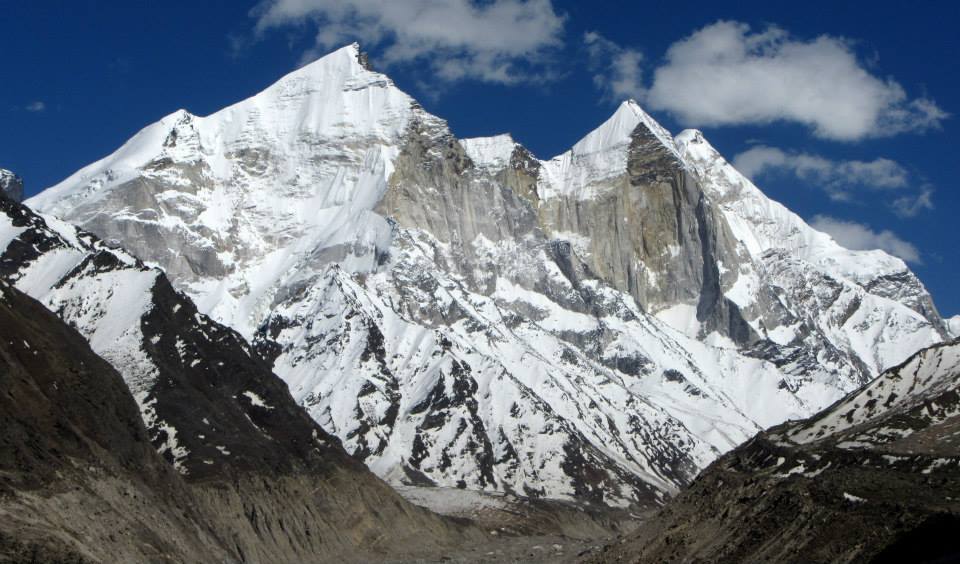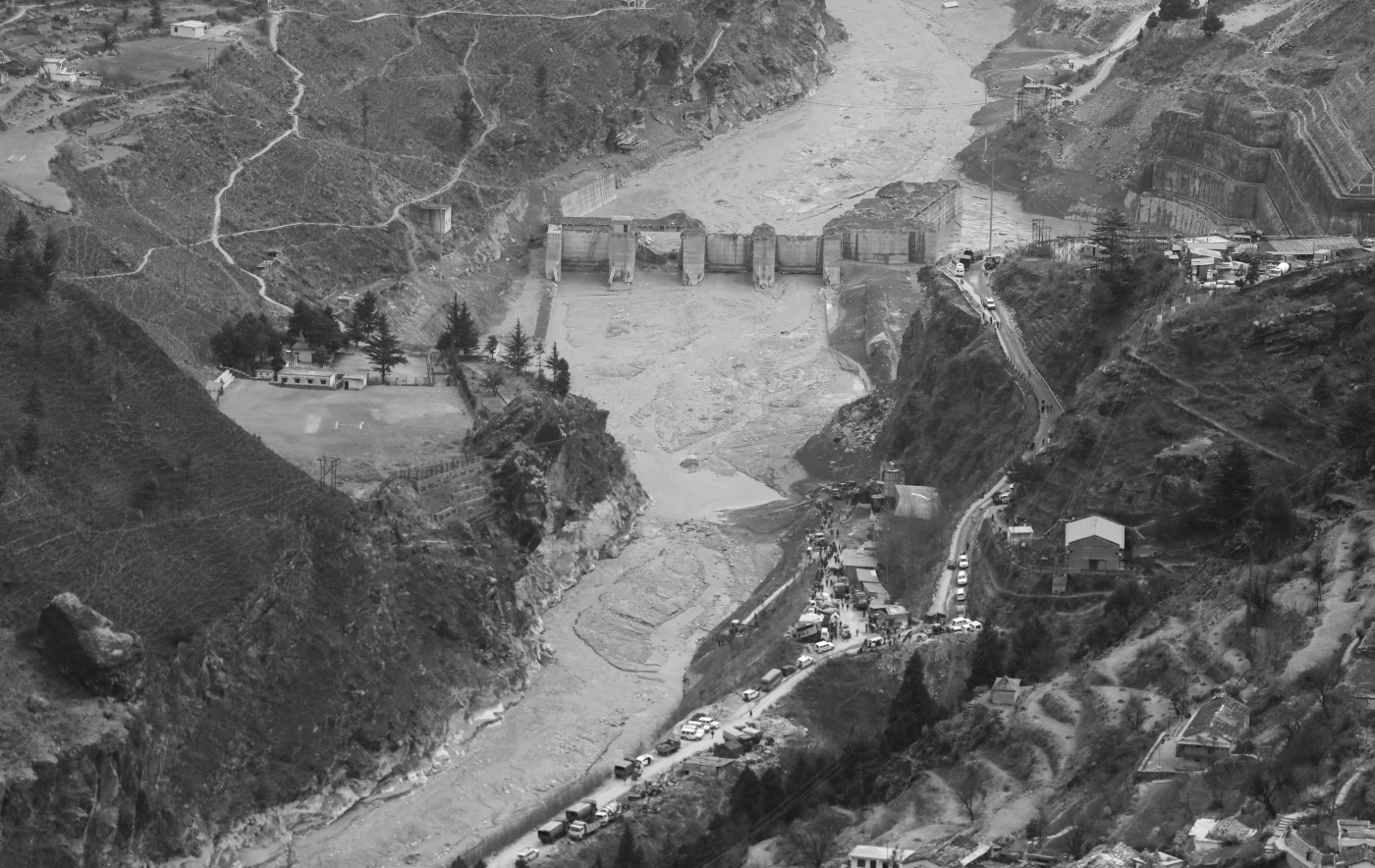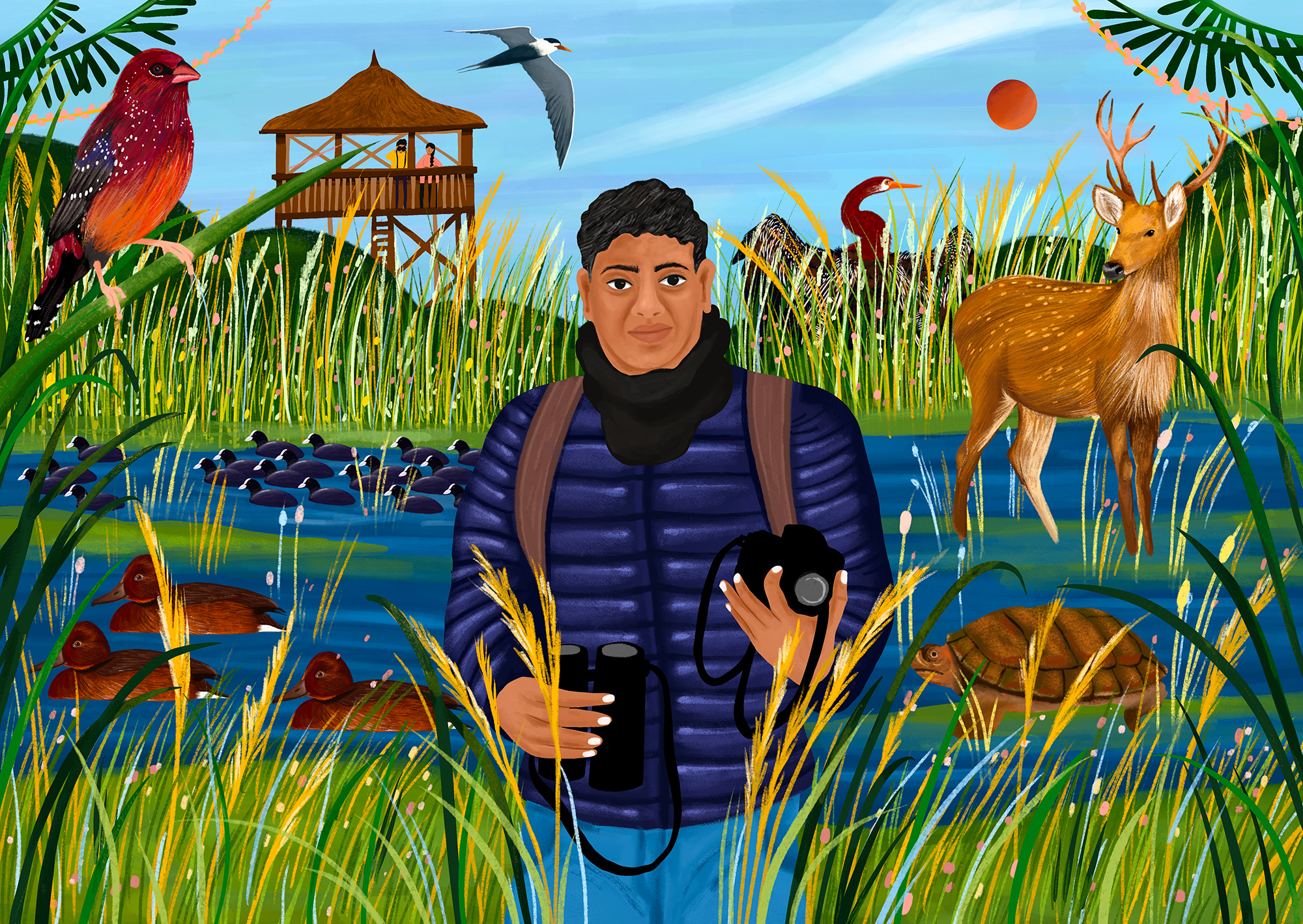If global climate efforts fail and we continue to burn fossil fuels and dump carbon dioxide into the atmosphere as we do now, it would lead to “five degrees in warming” of the Hindu Kush Himalayan (HKH) region and a loss of two-thirds of the glaciers.

Receding Himalayan glaciers, flooded rivers, extreme weather events such as Kedarnath tragedy in 2013 and springs going dry — much has been discussed about the Himalayas. Now, going beyond doubt and backed with data, a new comprehensive assessment of the Hindu Kush Himalayan (HKH) region has sounded dire warning bells.
Titled ‘The Hindu Kush Himalayas Assessment: Mountains, Climate Change, Sustainability and People’, the report is styled after the Inter-governmental Panel on Climate Change (IPCC)’s regular assessment reports.
This report is the first and most authoritative study of its kind to provide an assessment of one of the world’s most significant, yet overlooked, mountain regions. Developed over five years, it includes insight by more than 350 researchers and policy experts from 22 countries and 185 organizations. With 210 authors, 20 review editors and 125 external reviewers, it provides an unprecedented insight into the region’s distinct environment, people and wildlife.
The study talks about the Third Pole that spans across eight countries in South Asia and is home to 10 major rivers basins, thus forming a critical water source to some 250 million mountain dwellers and the 1.65 billion others living in the valleys below.
With it, comes the warning — act or be prepared for consequences. The first assessment report on the Hindu Kush Himalayan (HKH) region released by the International Centre for Integrated Mountain Development (ICIMOD), has warned that “even the most ambitious Paris Agreement goal of limiting global warming to 1.5 degrees by the end of the century, would lead to a 2.1 spike in temperatures and the melting of one-third of the region’s glaciers.”
If global climate efforts fail and we continue to burn fossil fuels and dump carbon dioxide into atmosphere as we do now, it would lead to “five degrees in warming” of the HKH region and a loss of two-thirds of the region’s glaciers by the year 2100, the report said. Countries across the globe agreed on December 2015 in Paris, to cut down global emissions by reducing fossil fuel usage, in order to keep overall average temperature rise (compared to pre-industrial days) well below 1.5 degrees. This resolve was further consolidated at Warsaw in December 2018.
While the report has assessed HKH region in all eight countries — Afghanistan, Pakistan, India, Nepal, Tibet (under Chinese occupation), Bhutan, Bangladesh and Myanmar — it is India that will be worse affected. From Jammu and Kashmir to Arunachal Pradesh, India is blessed with 2,500km-long Himalayan range, including the trans-Himalayan regions of Ladakh and parts of Himachal Pradesh (Lahaul and Spiti).
ICIMOD’s Philippus Wester, who headed the report, explains. “This is the climate crisis you haven’t heard of. Global warming is on track to transform the frigid, glacier-covered mountain peaks of the HKH cutting across eight countries to bare rocks in a little less than a century. Impacts on people in the region, which is already one of the world’s most fragile and hazard-prone areas, will range from worsened air pollution to an increase in extreme weather events,” he said. “It is the projected reductions in pre-monsoon river flows and changes in the monsoon that will hit hardest, throwing urban water systems, food and energy production off kilter,” he added
What is in store for India?
The Himalayas provide livelihoods and ecosystem services to more than 210 million people and provide water to more than 1.3 billion people — a fifth of the world’s population. When glaciers melt, they flow into lakes and rivers. Changes in the timing and magnitude of this melting leads to a surge of glacier runoff into major rivers like the Indus, Ganges and the Brahmaputra. This could lead to flooding, destruction of crops and also force a change in the agricultural patterns of the surrounding valleys.
What is more is that, extreme temperature indices have changed. This means, occurrences of extremely cold days and nights have declined, while occurrences of extremely warm days and nights have increased. This trend is particularly pronounced in most parts of North India.
Even when there have been improvements at the national level when it comes to energy security, almost 80% of the rural populations living in the HKH region lack access to clean energy for cooking and keeping themselves warm. There is also a lack of mountain-specific energy-policy.
The rising pollution levels in the past decade have further contributed to the problem. Across the region, levels of particulate matter (PM) — both primary and secondary aerosols, as well as tropospheric ozone (O3) which is a secondary pollutant — have increased. In cities such as Agra, Allahabad, Amritsar, Jaipur, Patna, Dehradun, Delhi, Lucknow, Ludhiana of the Indo-Gangetic or Indus basin, the annual average concentrations are 10 times higher than the guideline value. These pollutants deposit black carbon and dust on the glaciers, hastening their melting and in turn, changing the monsoon circulation and rainfall distribution over Asia.
In this context, disaster risk reduction is particularly important in the multi-hazard environment of the HKH. Communities here are more vulnerable due to their remoteness, poor accessibility and lack of emergency communication.
Are we prepared?
Yes and no. Yes, because through last 10–15 years, the Central government expressed concerns over the changes taking place in the Himalayas. And no, because that intent is not supported by action on ground.
An immediate example is the Central government’s overt focus on hydropower projects which unfortunately serve very little purpose at a hyper local level, but helps meeting the needs of people who do not live in the Himalayas. Or for that matter, the ambitious Char Dham Yatra project in Uttarakhand wherein blasting of mountains, dumping debris in the rivers and cutting down of trees for constructing roads, is happening at a maddening pace and in complete ignorance to the local community’s needs.
Numerous university students, researchers, governmental and non-governmental agencies are carrying out research in the Himalayas. However, there exists no single platform to bring all of them together. The lab-to-land transfers are turtle-paced and even when there are enough disaster-preparedness initiatives, the last mile connectivity to warn the people who are to face the disaster is missing.
Two blunt examples are of the Kedarnath tragedy in 2013 and Kashmir floods of September 2014. In both the cases, despite the satellite images, the administration failed to issue enough warnings about the scale of damage possible. Further, the governments at the Centre, the state, as well as the local level, failed to ensure sustainable development policies in the Himalayan states.
There are state action plans when it comes to dealing with climate change. But most of the states lack the capacity to carry them out. Observing that “environmental governance reforms in the HKH emphasize decentralization, often creating positive local outcomes”, the report mentions how “these local initiatives are not adequately supported through sub-national and national governance systems”.
Ranging from the organic farming practices of North-Eastern states to the orchids of Himachal Pradesh or Kashmir, the local communities get inadequate support when it comes to fighting changes due to extreme weather events.
Community participation? Trans-boundary outreach?
The report also dwells on how the HKH countries lack institutions to link upstream communities with the downstream communities in river basins and mountain landscapes. “Environmental institutions need to address the complex geography of the region. Collaboration is hampered by limited data and knowledge sharing, by weak local political representation at higher levels, and by insufficient attention to social equity and inclusion,” it said.
The problem of weak local political representation, as mentioned in the report, further complicates matters. Indian Himalayan states have just 40 representatives out of the 543 Members of Parliament. The total breakup of the Lok Sabha members from each of the states of this region is such: Jammu & Kashmir (6); Himachal Pradesh (4); Uttarakhand (5); Sikkim (1); Arunachal Pradesh (2); Assam (14); Manipur (2); Meghalaya (1); Mizoram (1); Nagaland (1); Tripura (2) and West Bengal (1 for two districts of Darjeeling and Kalimpong). This is clearly too less, and too feeble a voice for a region which is so rich in diversity.
There are also several Trans boundary issues that need to be addressed. As of today, there aren’t many data sharing arrangements in place between the HKH region countries. The Indus Water Treaty (IWT) or the arrangement that India has with Bangladesh for sharing Ganga and Brahmaputra waters, are just a few examples and much more needs to be done.
According to the report, the north-west region of India will face far more extreme weather calamities due to increased instances of western disturbances. This further necessitates data sharing arrangements with neighboring countries and beyond.
Need a paradigm shift
What we need, is to reassess the drastic pace of development — be it haphazard tourism development, be it hydropower projects, be it Char Dham Yatra roads or be it changing housing pattern. Ultimately, we need to think, what are we going to hand over to the next generation? A barren Himalayas bereft of greenery and its perennial springs and rivers, or a development model that sustains the biodiversity and provides an eco-friendly means of livelihood?
After all, at stake are the lives of some 250 million mountain dwellers and the 1.65 billion others living in the river valleys and basins at lower altitude.
As youngsters, most of us played ‘Fire in the mountain, run, run, run’. Described as ‘Nagadhiraaj’ by the famed poet Kaalidas, our Himalayas are indeed on fire and if we do not take immediate mitigative measures, we would actually end up with no other option but to “run, run, run”.
Originally published at www.news18.com.




